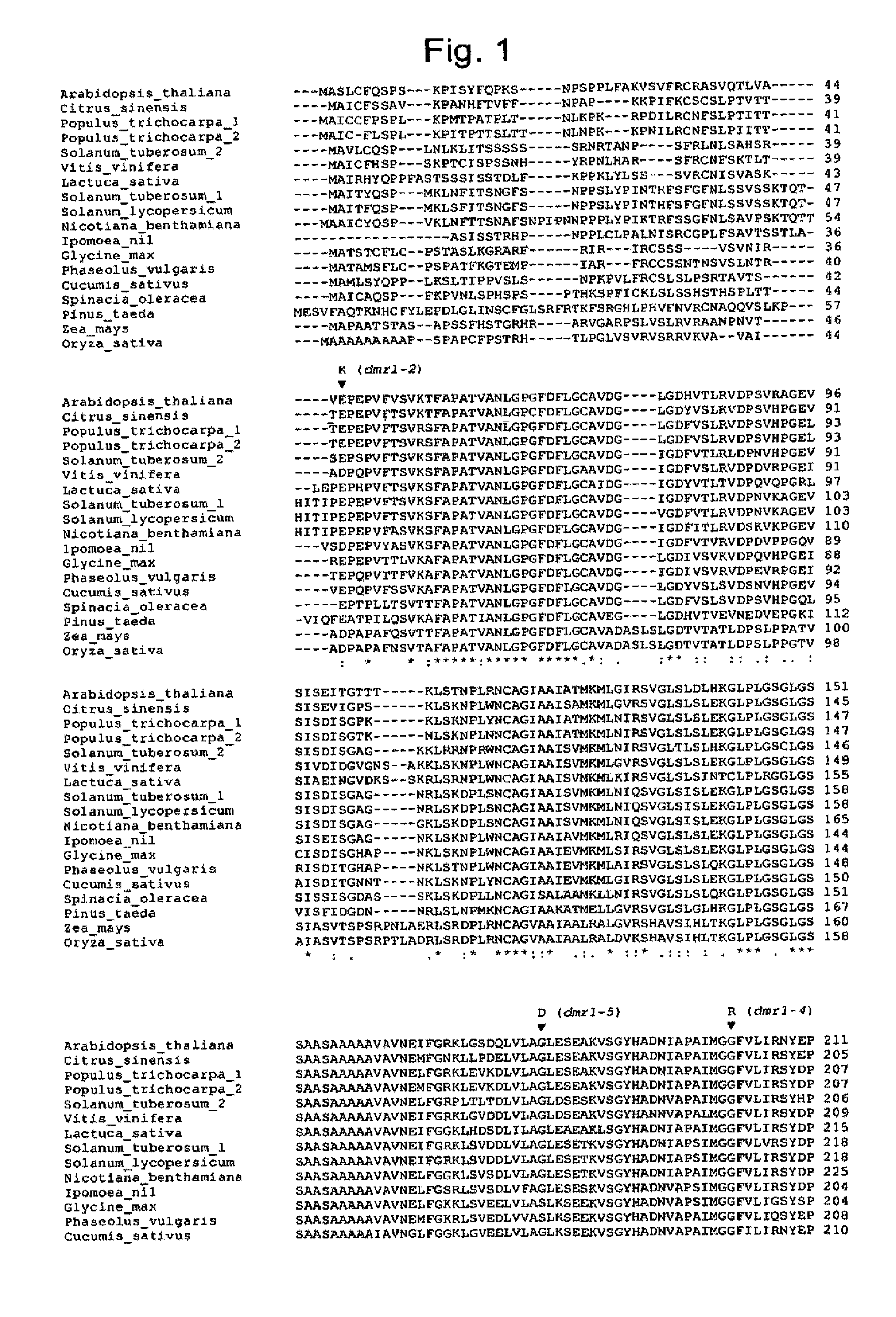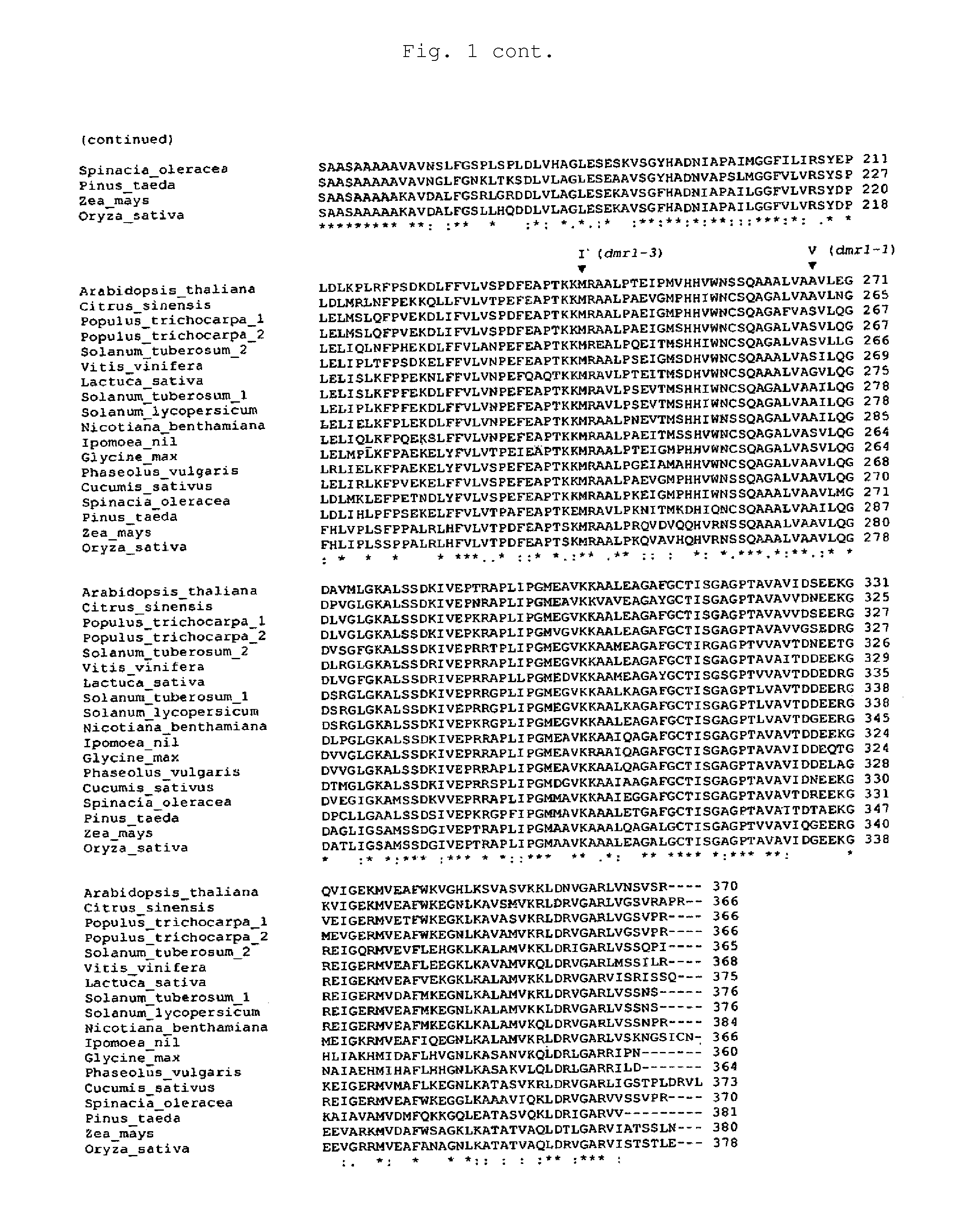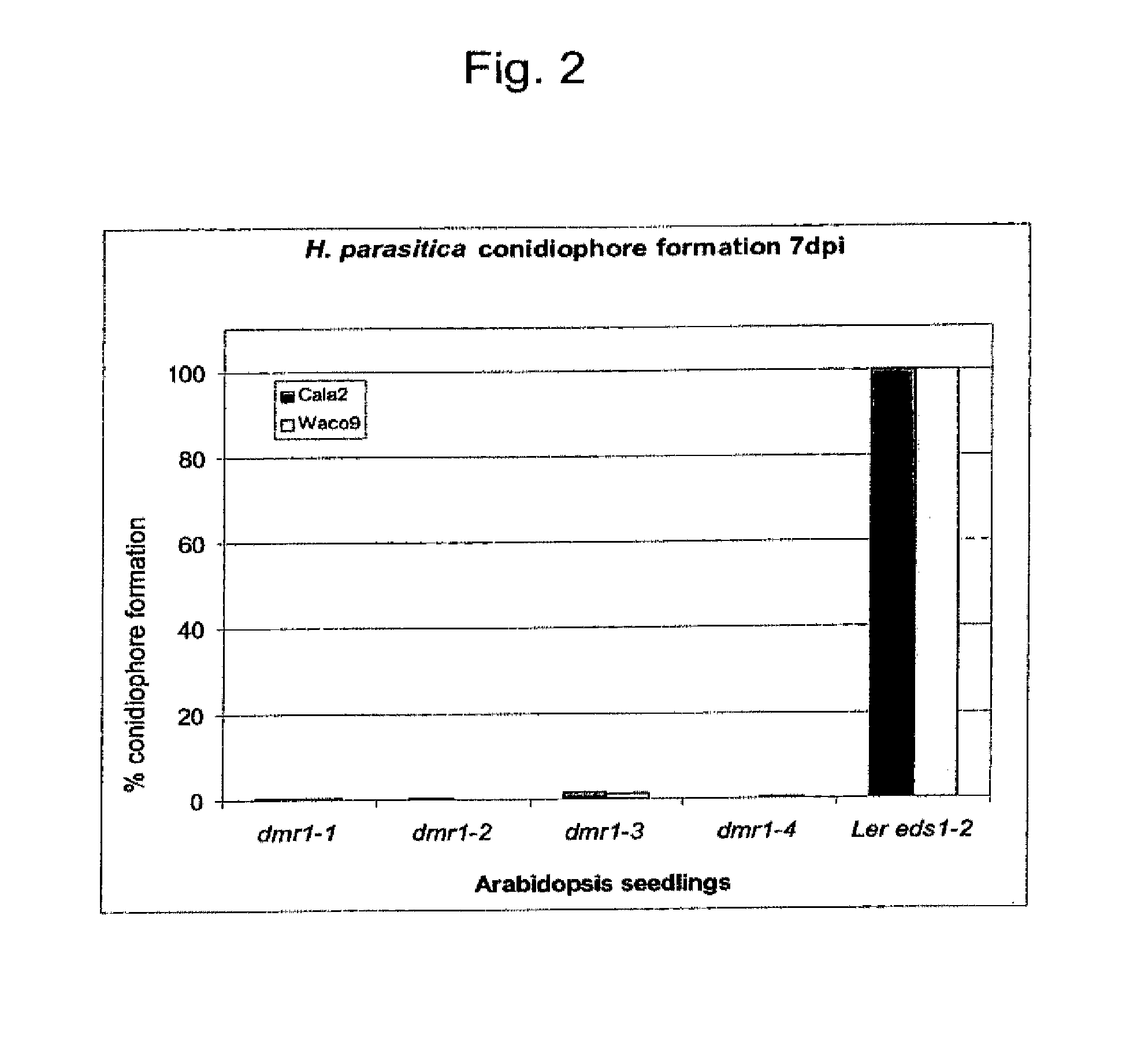Disease resistant plants
a technology for disease resistance and plants, applied in the field of disease resistance plants, can solve the problems of increasing the enzymatic activity of the homoserine kinase gene, the inability to detect additional and undesirable phenotypes of plants, and the inability to identify new sources of mostly monogenic dominant resistance genes, etc., to achieve the effect of reducing the conversion of homoserine, increasing the endogenous homoserine level, and lowering the enzymatic activity
- Summary
- Abstract
- Description
- Claims
- Application Information
AI Technical Summary
Benefits of technology
Problems solved by technology
Method used
Image
Examples
example 1
Characterization of the Gene Responsible for Pathogen Resistance in Dmr Mutants
[0067]Van Damme et al., 2005, supra disclose four mutants, dmr1-1, dmr1-2, dmr1-3 and dmr1-4 that are resistant to H. parasitica. The level of resistance can be examined by counting conidiophores per seedling leaf seven day post inoculation with the H. parasitica Cala2 isolate (obtainable from Dr. E. Holub (Warwick HRI, Wellesbourne, UK or Dr. G. Van den Ackerveken, Department of Biology, University of Utrecht, Utrecht, NL). For the parental line, Ler eds1-2 (Parker et al., 1996, Plant Cell 8:2033-2046), which is highly susceptible, the number of conidiophores is set at 100%. The reduction in conidiophore formation on the infected dmr1 mutants compared to seedlings of the parental line is shown in FIG. 2.
[0068]According to the invention, the gene responsible for resistance to H. parasitica in the dmr1 mutants of van Damme et al., 2005, supra has been cloned by a combination of mapping and sequencing of ca...
example 2
Amino Acid Analysis
[0076]Homoserine phosphate is an intermediate in the production of methionine, isoleucine and threonine in Arabidopsis. Since homoserine kinase has a key role in the production of amino acids, free amino acid levels were determined in the parental line Ler eds1-2 and the four different dmr1 mutants. For this amino acids from total leaves were extracted with 80% methanol, followed by a second extraction with 20% methanol. The combined extracts were dried and dissolved in water. After addition of the internal standard, S-amino-ethyl-cysteine (SAEC) amino acids were detected by automated ion-exchange chromatography with post column ninhydrin derivatization on a JOEL AminoTac JLC-500 / V (Tokyo, Japan).
[0077]Amino acid analysis of four different dmr1 mutants and the parental line, Ler eds1-2 showed an accumulation of homoserine in the dmr1 mutants, whereas this intermediate amino acid was not detectable in the parental line Ler eds1-2. There was no reduction in the leve...
example 3
Pathogen Resistance is Achieved by Application of L-Homoserine
[0081]To test if the effect is specific for homoserine the stereo-isomer D-homoserine was tested. Whole seedlings were infiltrated with water, 5 mM D-homoserine and 5 mM L-homoserine. Only treatment with the natural amino acid L-homoserine resulted in resistance to H. parasitica. Seedlings treated with water or D-homoserine did not show a large reduction in pathogen growth and were susceptible to H. parasitica. The infiltration was applied to two Arabidopsis accessions, Ler eds1-2 and Ws eds1-1, susceptible to Cala2 and Waco9, respectively. Conidiophore formation was determined as an indicator for H. parsitica susceptibility. Conidiophores were counted 5 days post inoculation with H. parasitica and 2 days post infiltration with water, D-homoserine or L-homoserine. (FIG. 6). L-homoserine infiltration clearly results in reduction of conidiophore formation and H. parasitica resistance. This was further confirmed by studying ...
PUM
 Login to View More
Login to View More Abstract
Description
Claims
Application Information
 Login to View More
Login to View More - R&D
- Intellectual Property
- Life Sciences
- Materials
- Tech Scout
- Unparalleled Data Quality
- Higher Quality Content
- 60% Fewer Hallucinations
Browse by: Latest US Patents, China's latest patents, Technical Efficacy Thesaurus, Application Domain, Technology Topic, Popular Technical Reports.
© 2025 PatSnap. All rights reserved.Legal|Privacy policy|Modern Slavery Act Transparency Statement|Sitemap|About US| Contact US: help@patsnap.com



